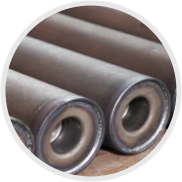 Afrikaans
Afrikaans  Albanian
Albanian  Amharic
Amharic  Arabic
Arabic  Armenian
Armenian  Azerbaijani
Azerbaijani  Basque
Basque  Belarusian
Belarusian  Bengali
Bengali  Bosnian
Bosnian  Bulgarian
Bulgarian  Catalan
Catalan  Cebuano
Cebuano  Corsican
Corsican  Croatian
Croatian  Czech
Czech  Danish
Danish  Dutch
Dutch  English
English  Esperanto
Esperanto  Estonian
Estonian  Finnish
Finnish  French
French  Frisian
Frisian  Galician
Galician  Georgian
Georgian  German
German  Greek
Greek  Gujarati
Gujarati  Haitian Creole
Haitian Creole  hausa
hausa  hawaiian
hawaiian  Hebrew
Hebrew  Hindi
Hindi  Miao
Miao  Hungarian
Hungarian  Icelandic
Icelandic  igbo
igbo  Indonesian
Indonesian  irish
irish  Italian
Italian  Japanese
Japanese  Javanese
Javanese  Kannada
Kannada  kazakh
kazakh  Khmer
Khmer  Rwandese
Rwandese  Korean
Korean  Kurdish
Kurdish  Kyrgyz
Kyrgyz  Lao
Lao  Latin
Latin  Latvian
Latvian  Lithuanian
Lithuanian  Luxembourgish
Luxembourgish  Macedonian
Macedonian  Malgashi
Malgashi  Malay
Malay  Malayalam
Malayalam  Maltese
Maltese  Maori
Maori  Marathi
Marathi  Mongolian
Mongolian  Myanmar
Myanmar  Nepali
Nepali  Norwegian
Norwegian  Norwegian
Norwegian  Occitan
Occitan  Pashto
Pashto  Persian
Persian  Polish
Polish  Portuguese
Portuguese  Punjabi
Punjabi  Romanian
Romanian  Russian
Russian  Samoan
Samoan  Scottish Gaelic
Scottish Gaelic  Serbian
Serbian  Sesotho
Sesotho  Shona
Shona  Sindhi
Sindhi  Sinhala
Sinhala  Slovak
Slovak  Slovenian
Slovenian  Somali
Somali  Spanish
Spanish  Sundanese
Sundanese  Swahili
Swahili  Swedish
Swedish  Tagalog
Tagalog  Tajik
Tajik  Tamil
Tamil  Tatar
Tatar  Telugu
Telugu  Thai
Thai  Turkish
Turkish  Turkmen
Turkmen  Ukrainian
Ukrainian  Urdu
Urdu  Uighur
Uighur  Uzbek
Uzbek  Vietnamese
Vietnamese  Welsh
Welsh  Bantu
Bantu  Yiddish
Yiddish  Yoruba
Yoruba  Zulu
Zulu tail pulley
Understanding Tail Pulleys An Integral Component in Conveyor Systems
In various industries, especially those involving bulk material handling, conveyor systems play a crucial role in facilitating the efficient movement of goods. Among the essential components of these systems is the tail pulley, a part that, while often overlooked, ensures the smooth operation and longevity of the conveyor belt.
What is a Tail Pulley?
A tail pulley, sometimes referred to as a return pulley, is located at the end of a conveyor system. Its primary purpose is to support the conveyor belt as it returns to the head pulley after transporting materials. The tail pulley is essential to maintaining belt tension and alignment, which in turn prevents slippage and extends the lifespan of the conveyor belt.
Importance of Tail Pulleys
1. Belt Tension Maintenance Tail pulleys help in keeping the necessary tension on the conveyor belt. Proper tension is critical to prevent the belt from sagging or becoming misaligned, which can lead to operational inefficiencies and increased wear and tear.
2. Supporting Return Path As the belt traverses around the tail pulley, it enters the return phase. The tail pulley provides the necessary support to keep the belt in place, ensuring smooth movement back to the head pulley. This function is vital for uninterrupted operations in high-volume production settings.
3. Reduction of Wear and Tear The presence of a well-designed tail pulley can significantly minimize abrasion and damage to the conveyor belt. By allowing the belt to navigate smoothly without excessive friction or sharp angles, the tail pulley enhances the durability of the belt and reduces the need for frequent replacements.
4. Facilitating Maintenance Tail pulleys are often constructed to allow easy access for maintenance. Regular inspections and timely servicing of the tail pulley can prevent unexpected breakdowns and costly downtime. Maintenance might include checking for wear, ensuring proper alignment, and lubricating moving parts.
tail pulley

Design and Construction
Tail pulleys are typically made from robust materials such as steel, ensuring they can withstand the heavy loads and rugged conditions common in industrial environments. Their design often incorporates features like rubber lagging, which enhances traction between the belt and the pulley, further minimizing slippage.
In addition, the size and diameter of the tail pulley can vary depending on the specific requirements of the conveyor system. Larger pulleys may be used for high-capacity operations, while smaller ones might suffice for lighter applications.
Challenges and Considerations
While tail pulleys are integral to the smooth operation of conveyor systems, they are not without challenges. Misalignment or wear can lead to serious issues such as belt tracking problems, which can disrupt the entire system. Operators must regularly monitor the condition of tail pulleys to ensure they function optimally.
Furthermore, the environment in which the conveyor operates can impact tail pulley performance. Factors such as temperature, humidity, and exposure to corrosive materials must be considered when selecting materials and designs for tail pulleys.
Conclusion
In conclusion, tail pulleys are a vital component of conveyor systems, playing an essential role in belt maintenance, operational efficiency, and overall system reliability. Understanding their function and importance can lead to better designs, improved maintenance practices, and extended equipment life. As industries continue to evolve and expand, the role of tail pulleys will remain integral to achieving streamlined operations in material handling.
-
Trusted Conveyor Solutions from Leading Conveyor Idler Roller ManufacturersNewsJun.27,2025
-
Reliable Return Idler Solutions for Efficient Belt Conveyor SystemsNewsJun.27,2025
-
Precision Conveyor Accessories for Streamlined Material HandlingNewsJun.27,2025
-
High-Quality Belt Conveyor Idler Solutions for Efficient Material HandlingNewsJun.27,2025
-
High-Performance Belt Conveyor Pulleys for Reliable Material HandlingNewsJun.27,2025
-
Enhancing Material Handling EfficiencyNewsJun.27,2025





























